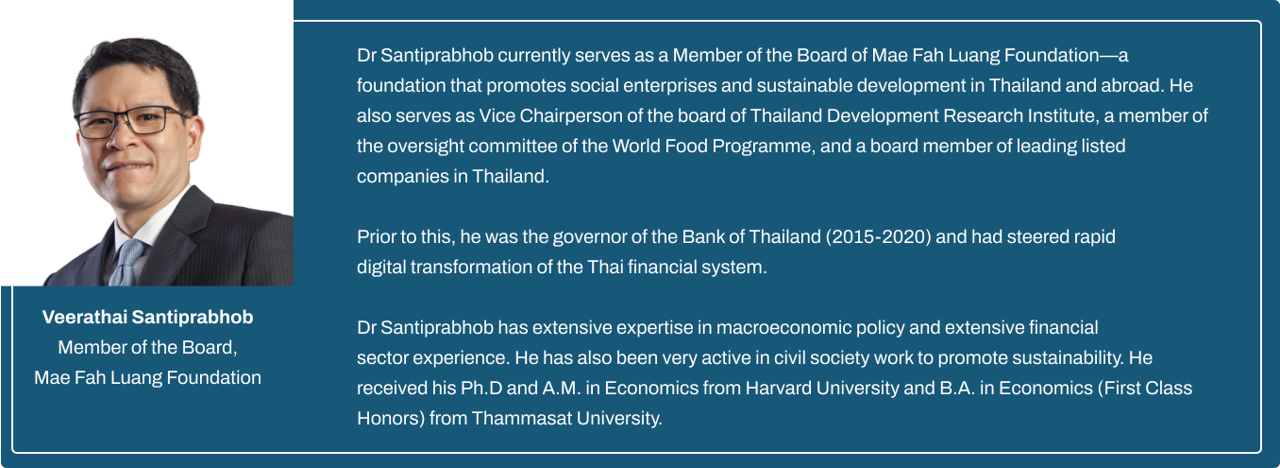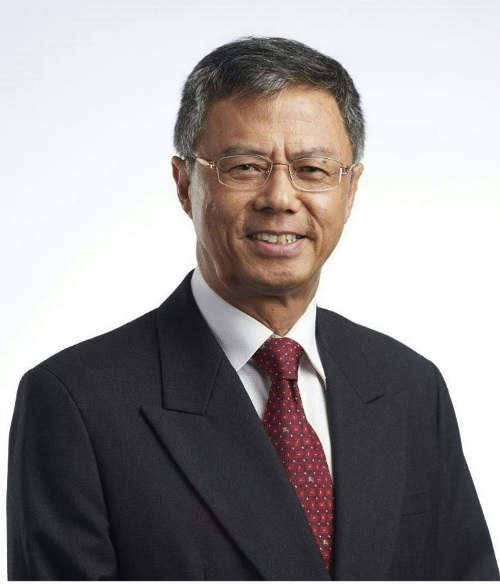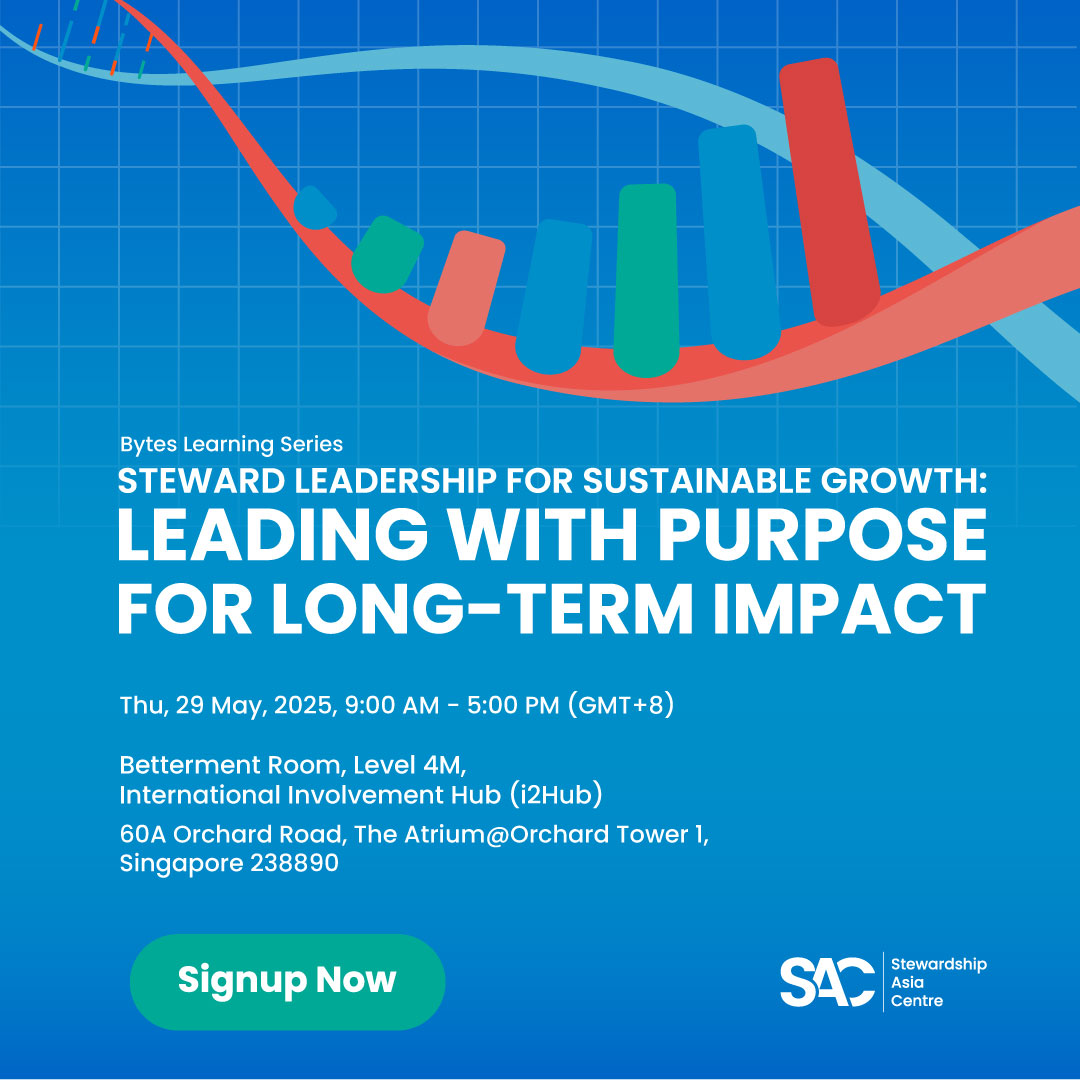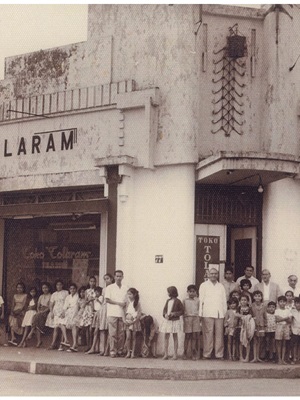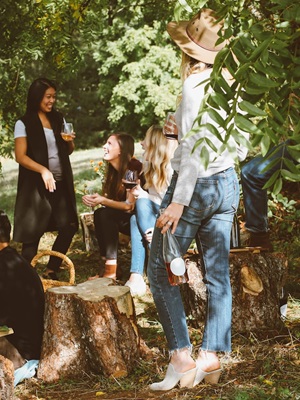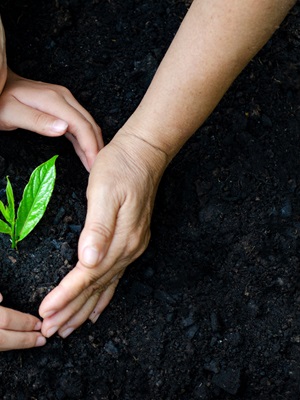Successfully tackling the major challenges that affect us all in an increasingly turbulent world — where environmental, social, economic and geopolitical paradigms are shifting — creates an opportunity for companies and their leadership to exercise stewardship. The right mindset and frameworks can be a calm and steadying force, driving real change and making a positive impact.
I’ve learnt from working with RGE, which manages a group of world-class companies specialising in resource-based manufacturing with a workforce of over 60,000 people, that good stewardship must start at the top and right from the start.
Genesis of our sustainability journey: community, country, company
This year, RGE turns 55.
In the first 50 years, our 3Cs philosophy of “doing good for the Community, good for the Country, and only then will it be good for the Company” has guided us well. We built our first plywood mill in Besitang, Indonesia, in the 1970s, a time when many companies were already making good profit from just exporting logs.
But our founder and Chairman, Mr Sukanto Tanoto, knew that profit alone would not sustain the company in the long term. He wanted to support the country’s industrialisation goals by creating employment opportunities to enhance the country’s economic development. This was RGE’s modus operandi then — wherever we built mills and plants, in Besitang and later in other parts of Indonesia, China and Brazil, we contributed to the socio-economic development of the countries and communities in which we operate.
Beyond philosophy
As we conduct our business, we reflect on our experiences by assessing what works and what needs to be improved to take our efforts to the next level. We learnt that while there are many paths to sustainable business success, organisations need a stewardship framework to guide their decision-making.
Having a core philosophy is not enough. Deeply embedded frameworks and strategies aligned with stakeholder expectations must be implemented to bring it to life and drive the company forward.
For example, our business groups manage plantations using the universally recognised High Conservation Value (HCV) and High Carbon Stock (HCS) sustainable forestry frameworks. These frameworks help us identify important environmental and social values that should be addressed and conserved before developing new plantations in concessions licensed by the Indonesian government. According to Indonesian laws, we are only required to conserve up to 10% of the concession area. But with the implementation of the HCV/HCS framework, the conservation areas total close to 40% of the land concession.
Uplifting communities
We also recognise that no company’s sustainability vision can be truly enduring if communities are left behind.
As we operate predominantly in the rural areas in developing countries, we work with local communities to alleviate poverty through three thrusts: Education, Empowerment and Enhancement of quality of life. We strive to improve access to quality education for students and their teachers. We empower locals through vocational training and entrepreneurship programmes to improve employability. We enhance the quality of life in communities by implementing health programmes, improving their sanitation facilities and providing clean water for the villages around our operations.
Raising the bar
Starting right should not and did not stop us from wanting to do better.
The perennial haze issue did not see a breakthrough despite multi-stakeholder groups striving to resolve this problem yearly. Through our years of operating on the ground, we realised that discussions and actions must go beyond the suppression of fires and towards preventing them from being used to clear land in the first place.
The Fire Free Village Programme (FFVP) became a major part of our prevention strategy. Launched in 2015 in Riau, the FFVP is a multi-stakeholder fire prevention project founded in collaboration with local communities and in partnership with NGOs and local government agencies. The FFVP aims to increase awareness of the negative impacts of land burning.
It is a multi-faceted programme which supports communities in developing their social and economic capabilities — all without using fire to clear and prepare land for planting.
We intensified our efforts as FFVP showed good progress in fire prevention and managing fire-free landscapes within our forestry plantation areas. We galvanised the agricultural industry to form the Fire Free Alliance (FFA) in 2016. FFA is a voluntary multi-company group that works with NGOs and other partners to resolve Indonesia’s persistent fire and haze problems through the prevention approach. Such a collaborative partnership yields benefits for everyone from the local community and the company to the country and climate.
Our determination to continually improve later led to the Production-Protection model of plantation, where we commit to a bold 1-for-1 goal of conserving one hectare of forest for every hectare of plantation. This includes our USD100 million commitment to step up conservation and restoration efforts in Riau via the Riau Ecosystem Restoration (RER) initiative announced on the side line of the Paris Climate Conference in France in 2015. Together with the other conservation areas within our plantations, we have restored around 365,000 hectares of forests — more than twice the size of London. And these conservation areas are protected by a ring of plantations around them. The Production-Protection Model is our approach to landscape management that includes recognising community rights that are necessarily and rightfully part of the process of ensuring sustainable operations.
Over time, as the global business landscape evolved and our experience and business grew, our 3Cs philosophy became a broader commitment that included “good for the Climate and good for the Customer,” forming the 5Cs principle we have today.
I am mindful of the criticisms that many companies are approaching the United Nations Sustainable Development Goals (SDGs) too superficially, making only marginal improvements and contributions to the SDGs.
From 2017 – 2020, we worked alongside PwC to assess the impact of our business activities using the SDGs as a framework. This exercise enabled our business groups to prioritise the SDGs, resources and programmes based on the needs analysis in the areas where we operate, our current contributions to local social and economic development and the potential to maximise our impact where the needs are greatest. This effort also aimed to identify areas beyond our business’ core focus where we can have a catalytic effect and support the achievement of the SDGs in countries where we operate at the community, provincial and national levels. This is supported by the development of a framework to measure impact.
Vison 2030: From global goals to a decade of local actions
Our Vision 2030 commitments are accompanied by specific and measurable targets set to achieve the relevant SDGs by 2030, with the overall goal of delivering positive outcomes for climate, people, nature and the company. They include ensuring no deforestation, decarbonising our operations in land use, improving and respecting human rights.
To drive a decade of local actions, Vision 2030 is embedded throughout our organisation, from our business planning process, ESG mandates and resource allocation to human resources, management processes, manufacturing processes and all manners of engagement with diverse stakeholders, including our employees. It is stewardship in action, and all our employees are proud of their involvement.
As stewards of our resources, corporate leaders must recognise that sustainability cannot be addressed in silos. We must work alongside stakeholders to solve systemic issues and build long-term, innovative programmes that have a lasting positive impact.
In our RER programme in Indonesia, we work with international NGO Fauna & Flora International (FFI) and local social NGO Bidara to conduct the Carbon, Community and Biodiversity survey. In China, we embarked on a five-year partnership with Conservational International (CI) to restore the health and biodiversity of Poyang Lake, the largest freshwater lake in China. The lake is home to two wetlands of international importance and some of the endangered species on the IUCN Red List. Using CI’s scientific Freshwater Health Index (FHI) tool to evaluate the health of Poyang Lake, the partnership develops strategies for managing and protecting endangered species while supporting communities to live in harmony with nature.
Of course, strong governance is a cornerstone of overall good stewardship. Compliance, accountability, responsibility and transparency must be built into a company’s operating principles and practices.
In this regard, certification is part of our commitment to continuously improving product and process assurance for stakeholders. RGE business groups possess leading industry third-party certifications that provide assurance, from the efficiency, quality and sustainability of forestry plantation operations and manufacturing plants to the quality, consistency, compliance and origins of its end products that enable them to operate with a customer base in more than 75 countries. These include the Programme for the Endorsement of Forest Certification (PEFC), Roundtable on Sustainable Palm Oil (RSPO), and the International Sustainability & Carbon Certification (ISCC).
We have also built a suite of governance platforms to enable internal and public scrutiny of our performance and progress, including, but not limited to, the establishment of an independent Stakeholder Advisory Council; supply chain grievance mechanism; online sustainability dashboard; internal and third-party audits and annual sustainability reports.
Stewardship in practice
While companies must, by nature, focus on what they can control, good stewardship requires leaders to look beyond the confines of their own companies and the current generation.
Reflecting on the Stewardship Compass, I am heartened to see that its core values are already built into RGE’s culture and conduct.
Interdependence: Recognising that a critical tenet of the landscape approach to conservation is community involvement, our RER project emphasises community-level engagement to enable a sense of shared purpose and ownership in the project. As well as working with FFI on conducting biodiversity surveys and assessments, we work with Bidara to develop community development programmes to ensure traditional activities like fishing or honey-gathering are preserved while creating employment and related small business opportunities as an important part of the long-term sustainability model. We also focus on education so that the community appreciates how conservation can create local economic prosperity from diversified employment to social benefits, which would otherwise turn to illegal logging and poaching.
Long-term view: Our long-term view is to improve lives while managing resources sustainably, and this is operationalised through our 5Cs philosophy, which posits that a business has to do what is good for the community, the country, the climate and the customer, and only then would the business’ endeavours be good for the company.
Ownership mentality: It is one of the RGE Core Values. Known as “TOPICC” — Complementary Team, Ownership, People, Integrity, Customer and Continuous Improvement, these values are designed to provide a unifying framework and code of conduct to guide our employees in the years and decades ahead even as our companies continue to grow.
Creative resilience: RGE’s 55-year journey is not always smooth and rosy. From the Asian Financial Crisis of 1997 to the Global Economic Crisis of 2007-2008 to today’s pandemic, it is our firm belief that “if there is a will, there is a way” that we can overcome every crisis without wavering on our purpose and 5Cs, recover and become stronger. Our tenacity enabled us to deepen our roots in Indonesia, China and Brazil and expand into new frontiers such as Europe and Canada.
With the interplay of conflicts, COVID-19 and climate change, the environmental, social, geopolitical and development challenges we collectively face are daunting. Cognisant of the fact that climate change and natural crises are two sides of the same coin, we continue to stay the course in pursuing our programmes during the pandemic and even double down on sustainability efforts. For instance, in Indonesia, we installed 1MW of solar panels as part of a project to produce 20MW by 2025. When completed, it will be one of the largest solar installations by a private company in the country.
Anyone can hold the helm, but a leader must chart the course. And in these dire times, particularly in our race to address the climate challenge, steward leadership guided by the values compass is what it will take to help the society and economy ride out the storms and towards an equitable, inclusive and sustainable recovery for a resilient future.
Posted 01/02/2023
